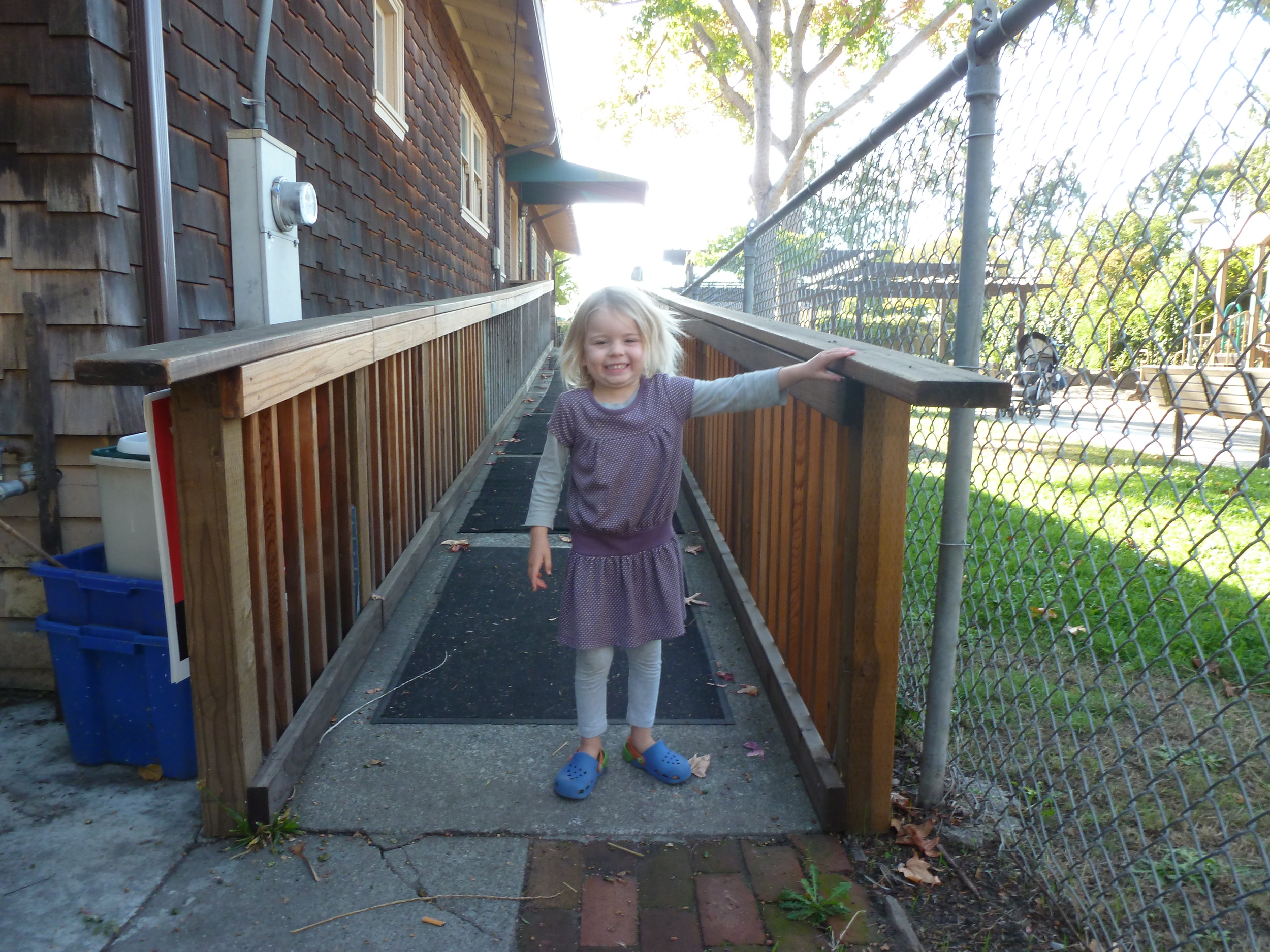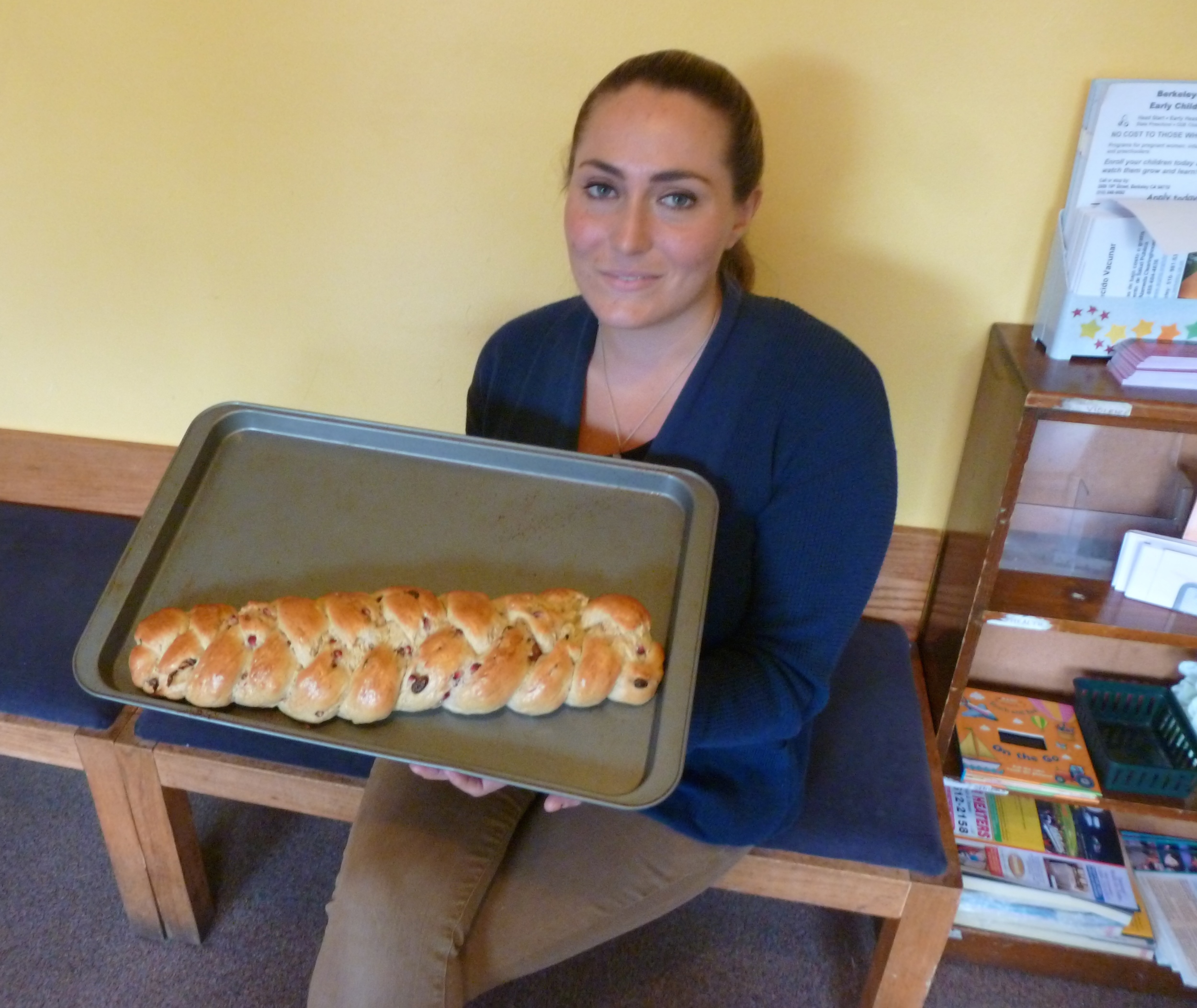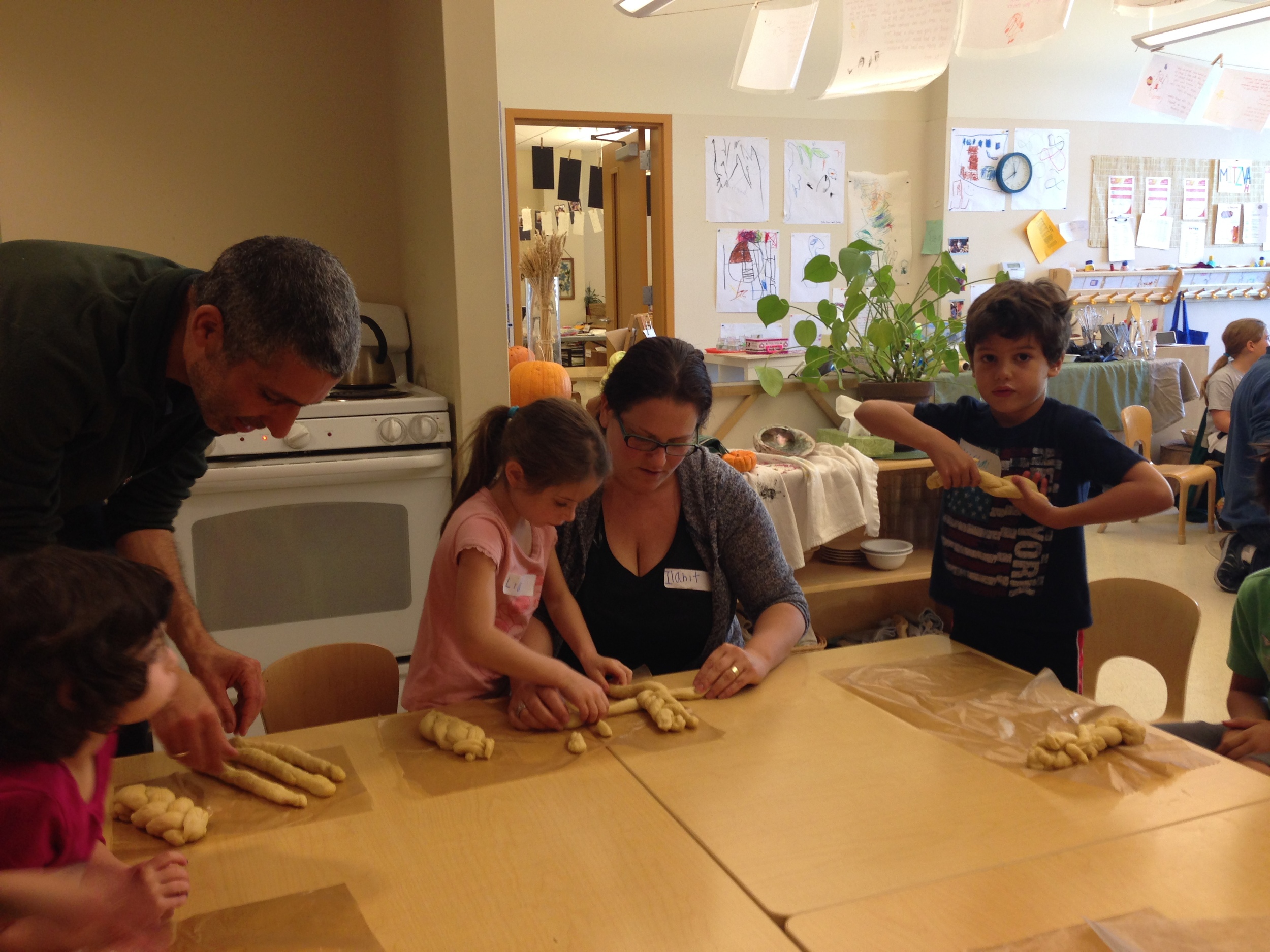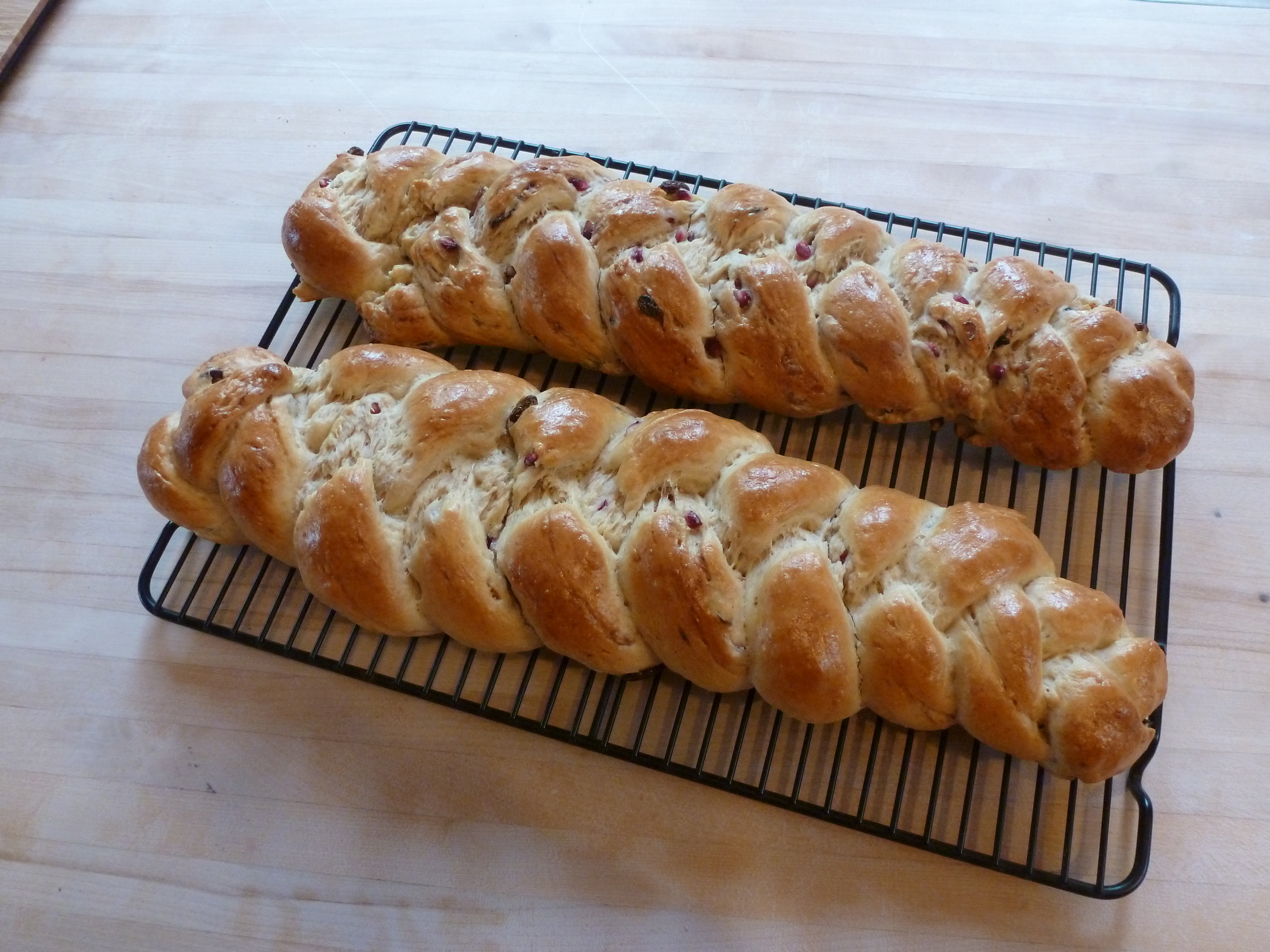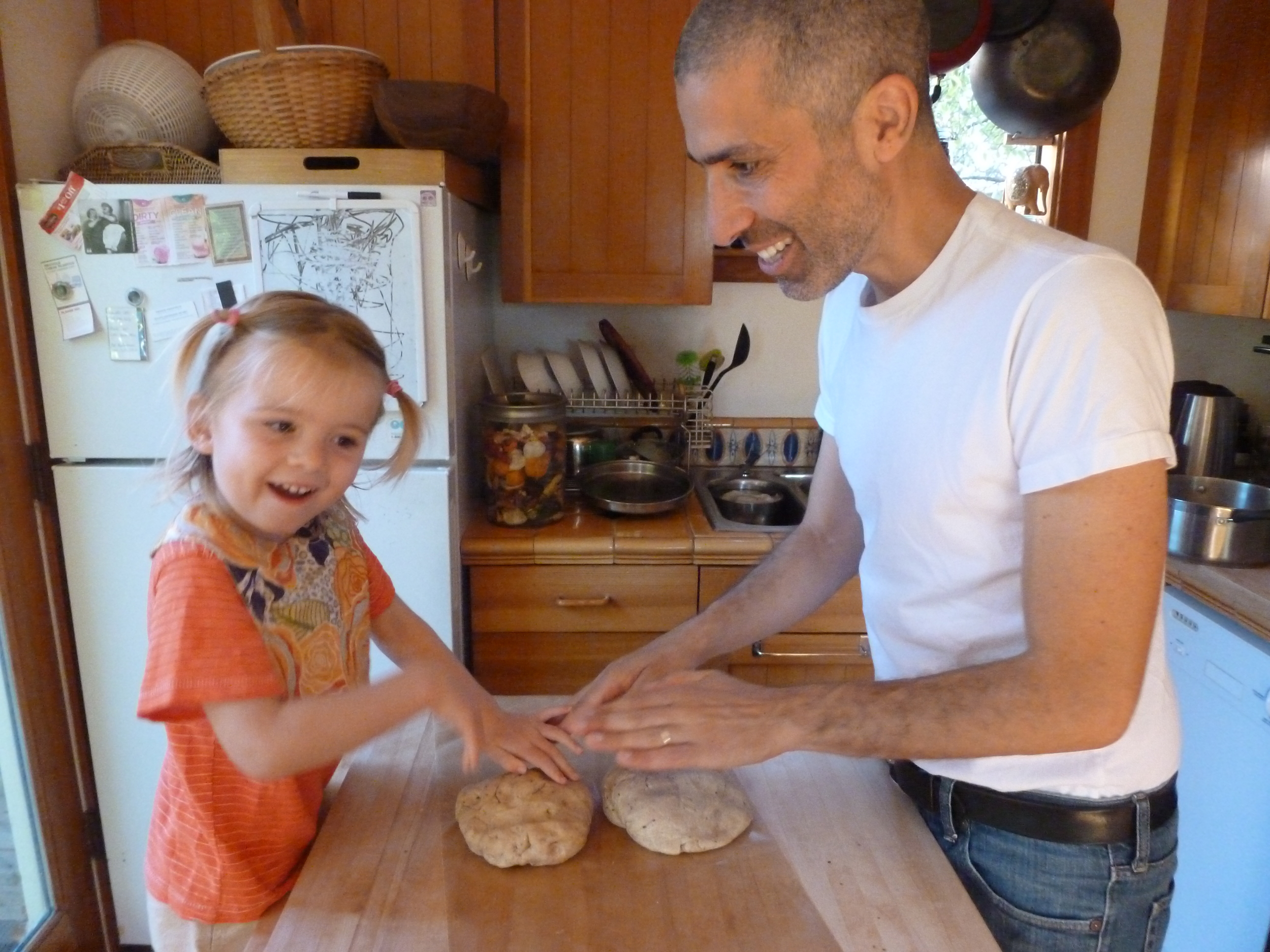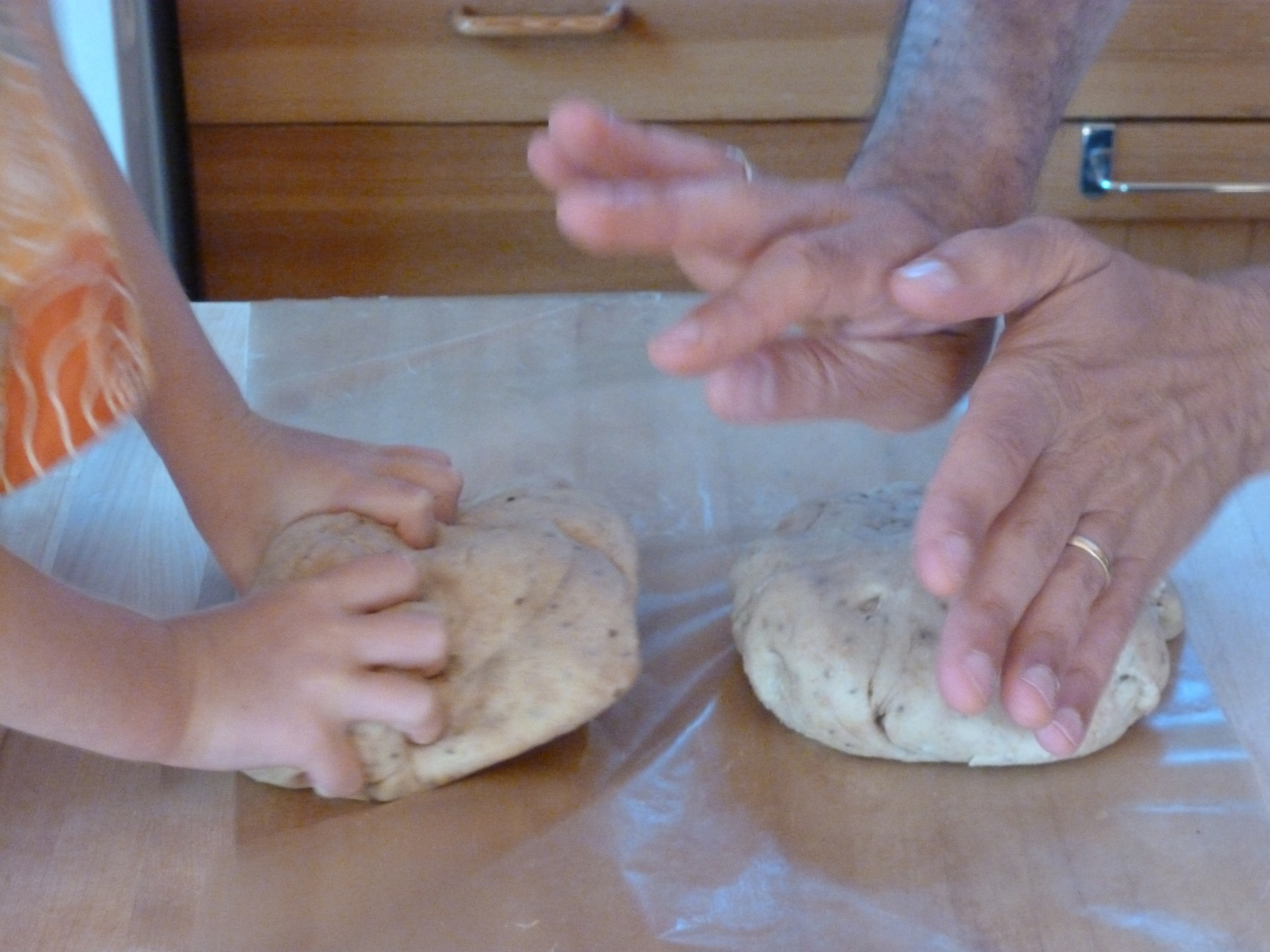In late summer, the need to participate in more meaningful Jewish rituals with my 3-year-old daughter announced itself. Yes, we somewhat regularly had a Shabbat meal, and attended one tot service or another, but it clearly wasn't enough—especially as she isn't attending a Jewish preschool. I worried that she wasn't receiving the songs, stories, and holiday primers that many of our friends' children were experiencing on a daily basis.
What to do?
Bake some loaves of challah together, of course--what better way to prepare for Shabbat? After calling New York to obtain a mom-of-an-old-friend's ‘top secret’ recipe, I went to the store, purchased the requisite yeast and flour (we had honey and eggs on hand), and then delved into the challah rabbit hole, daughter in hand.
Starting the starter, measuring the ingredients, mixing the wet, combining the dry, adding it all together, kneading, waiting, shaping, egg-washing, watching as the loaves rose before our eyes in the oven's light, smelling the aroma as it wafted to every corner of our house (talk about quality parent-child time together)! And of course, the ultimate pleasure: saying the motzi and tasting the Sabbath prize. Nothing sweeter than that for our family of three.
Next Friday we were following the same schedule when an afternoon curveball entered through the kitchen door. Our wonderful next-door neighbors had come knocking and invited us for dessert that evening, as they had made fresh mulberry ice cream and were eager to share. After thanking and accepting, I quietly asked myself how we could return the generosity. My eyes quickly rested on our challahs; we are a small family, and can't in good conscience commit to consuming two large challahs before they become classic french-toast material, something that would most definitely not be a healthy weekly ritual!
"What if we gave one loaf away?" I mused. "One for us, and one for them." It seemed so natural, so easy. And it was. We ate dinner as a family that night, with more than enough tearings, saltings, and shmearings. And our neighbors next door had fresh-baked bread gracing their table and nourishing their appetites.
And it didn't stop there—for a seed had been planted; the simple act of making our own challah, knowing that we didn't, in fact, need all of it and could share with others, had made a huge impression on me. So the following week we took it even further.
On Friday afternoon, I went with my family to visit a neighborhood eldercare community. At 4:30, after sharing some Shabbat songs (I sing and play ukulele), we placed our challah on their cutting board and wished the participants a Shabbat Shalom. And again, that seed I had spoken about had been watered!
Other connections were soon made; over the last year, I’ve slowly been reading Wendy Mogel’s “The Blessings of a Skinned Knee.” In it, she often reminds us “children learn by example”. Thus, even if my daughter at the age of three doesn’t comprehend the deeper meanings of our actions now, if I want her to truly care about the world and the wider community as she’s growing, I need to provide opportunities for her to care and share from early on, even if she’ll never remember when she first “started” to do her part in ‘tikkun olam’ (repairing the world) in small but profound ways.
And as I started delving more into the actual traditions of challah, I learned that the Torah had a lot to say about the sharing of bread! The Israelites were instructed from early on to provide a portion of their bread as an offering to God, and as a tax to help nourish the priestly class, those who didn’t own land and thus could not grow their own food.
And I remembered an old Jewish folktale (a modern version is included in this website), in which one man mistakenly thinks he is giving challah to God by placing loaves in his synagogue’s Ark, and another man mistakenly thinks he is receiving challah from God by taking loaves from that same ark!
The intimate baking experiences with my daughter set me thinking. I wondered what it would look like to regularly bake challah with her, and regularly give away a portion for an entire year. This could help strengthen Jewish tradition within our home while “gifting-it-forward” to the wider community, as well.
Hence, with the start of the New Year, this Rosh Hashanah I’m initiating a “Challah-it-Forward” Challenge for my family. It’s simple really: Bake challah every week, a bit more than we actually need, and give some away to help strengthen the community: family, friends, the eldercare center down the street, a transitional housing project not far from our house, or the neighbors next door.
I’ll chronicle the weekly adventures, and invite you to join in, if you’re so inclined.
A sweet, round Shanah Tovah to you and yours!












